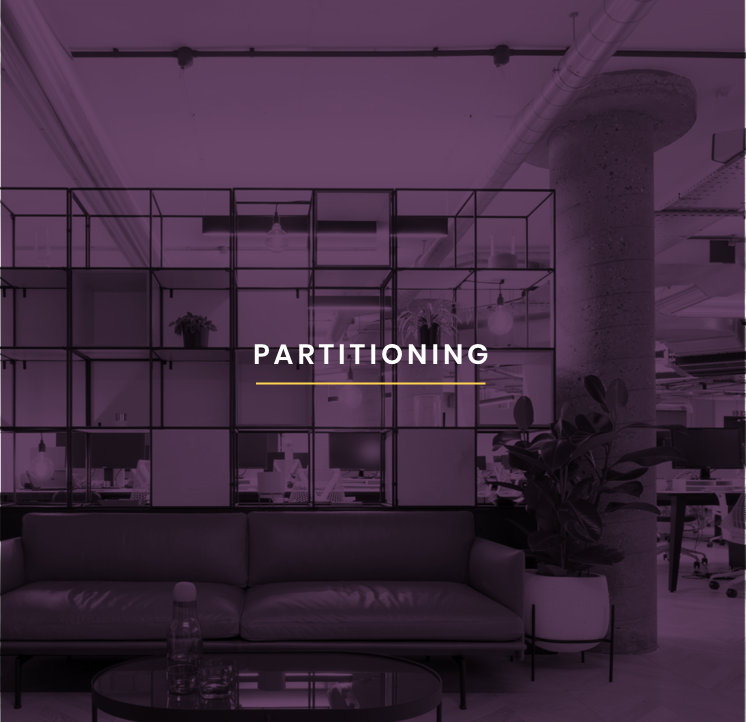We return to work at the darkest time of year with the daunting prospect of another whole year at work. People are left moody and lacking energy because they aren’t getting enough light, resulting in winter blues or seasonal affective disorder (SAD) – a type of depression linked to a lack of light.
However, even during longer days, a study by the American Society of Interior Designers showed that 68% of employees actively complain about the lighting situation in their offices. Poor lighting (which includes light being too bright or creating glare) can cause us to lose our ability to focus through eyestrain, fatigue and headaches. This can result in lower productivity; absenteeism and a recent study by the HSE has shown it also has an adverse effect on our daily moods.
Simple signs may take your notice such as quietly frustrated employees hauling in their own table lights and floor lamps to find the perfect blend of visual accuracy and not-so-corporate ambiance. You may have even been part of a group who hacked together shipping boxes to reduce screen glare from loft windows or overhead fluorescent lights. If you can see this happening in your workspace, maybe it’s worth investing the time to continue reading my article below or call me in to suggest a tailored solution that will work for you.
6 Solutions to Optimising your Lighting
- Make the most of natural daylight while it’s there – after all this is what our bodies respond to best. The number of windows in a building is the number one determinant. It can be as simple as opening the blinds (though glare on computer screens must be considered) to introducing skylights.
- Glass partitioning as opposed to composite partitioning will increase the amount of light that reaches inner parts of the building. I also try where possible to place smaller pods and offices on the interior of the building prioritising access of light to the main body of office staff.
- Where it’s not feasible to increase natural daylight or it’s dark, consider introducing dimmable switches to optimise for all levels of natural daylight and activity when there are long periods of working. Ergonomic desk lamps that take up little desk space, introduce a friendlier atmosphere and allow your team to take control of their own environment. Note: please reserve Edison bulbs for social areas – they are really a fashion and not ergonomically compatible with areas where you want to optimise productivity.
- Consider replacing your fluorescent lighting with recessed luminaires to that use reflectors to reflect the light around the office and reduce the direct glare.
- Painting your walls with light colours in a matte finish will help to reflect light indirectly while reducing dark shadows, contrast and glare.
- When advising on a lighting solution, I often suggest cooler (not necessarily brighter) blue lighting to promote alertness, mood and productivity in higher concentration areas. However, in reception and breakout areas, a warmer light will make the area feel more welcoming.
Productivity from Optimised Lighting
Enhanced lighting has been shown to result in happier workers, less absenteeism, and fewer illnesses, and, because better lighting encourages satisfaction among workers, it also results in increased productivity.
Employees will feel more empowered if they can control their own environment and it will allow them to adapt their lighting according to their task. Light is only used where it’s required which will see energy savings and happier employees.
It’s been particularly noticed that in repetitive tasks, improved lighting results in fewer errors being made, for example, the lighting systems in the U.S. post office in Reno, Nevada were renovated to make them more worker friendly. The upgrade resulted in energy savings of about $50,000 per year, but the real improvements came in the form of employee productivity. Mail sorters in the facility became the most productive sorters in the western half of the country, machine operators boasted the lowest error rates, and the financial impact of the productivity increase was expected to boost revenue by approximately $500,000 per year.
With light being a key component of vision, and vision being responsible for 80 to 85 percent of our perception of the world around us, it’s not difficult to see why ignoring proper lighting strategies in your office could have a significant negative impact on productivity. If you haven’t yet considered lighting ergonomics for your new office or expanding office design, pause and look around. Take note of whether your team is adjusting or having to settle for mediocre lighting or subpar fixtures. Not only will a design upgrade make your brand shine, it will have a major impact on your company’s overall mood and creativity.





